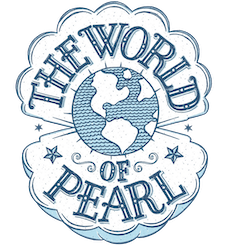Today I am feeling sentimental and I want to talk about babies… specifically growing baby oysters! Okay, okay, if you have read my post “I Thought Oysters Produced Pearls” you know they are really not oysters but these are the mollusks they use to produce cultured pearls. Look at these sweet babies, only 17 days old!

Cute, right?
Their journey begins when five male mollusks and five female mollusks are placed in a tank. The water temperature is raised slightly causing them to release their eggs and sperm. Now, imagine this: Mollusks are filter feeders, constantly sucking water in and out of their gills. So, mom and pops cannot stay in the tank for long with their sperm and eggs or they will literally eat them up by sucking them right into their gills. So, within and hour, it is goodbye babies and they are removed. The babies actually “hatch” within 24 hours. And by hatch, I mean the sperm actually fertilizes the egg! There is a 95-98% survival rate although, truthfully, of that high number of survival (from 72 million eggs!), only 1% of these mollusks actually survive to adulthood.
The total production of mollusks is about 1 million a year or around 300,000 per season. There are three spawns per year.
Almost all baby mollusks are born as male mollusks and as they grow, some will change their sex to female. Other cool fact about growing baby oysters (I mean mollusks!)… it takes about six months until they form a hard shell.
The babies are fed a special cocktail of plankton to maximize their growth. And a year and a half after breeding, these mollusks are seeded to produce cultured pearls!
Want to learn more? Watch the video I created from my trip to a hatchery in The Philippines! And if for some reason the below screen does not work, you can go directly to our YouTube channel here…
Want to learn more? Read Part 2: What Kills The Mollusks?
I am a modern day treasure hunter who travels the world for gorgeous pearls and amazing adventures. I own a pearl jewelry and jewelry repair business, ThePearlGirls.com, with a cute retail store in Athens, GA. I also have a Pearl Travel business and travel blog at TheWorldofPearl.com.


